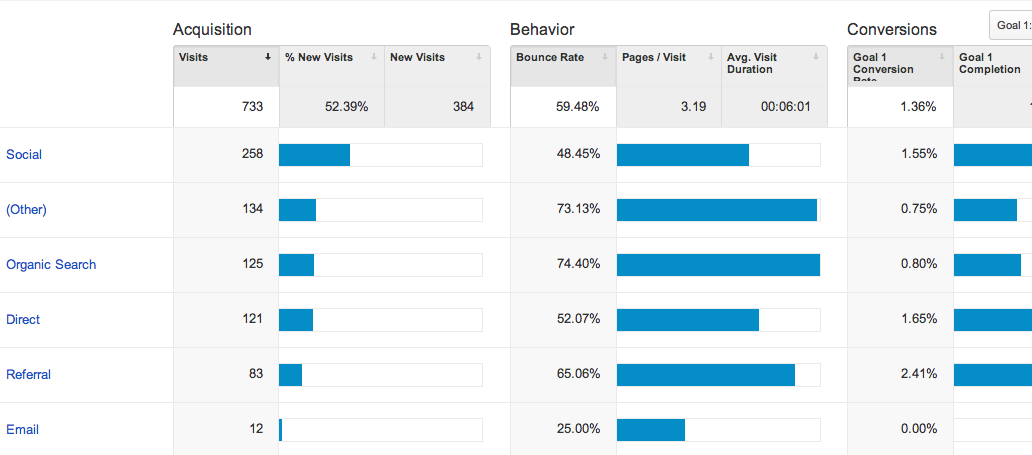What Data Is Google Analytics Goals Unable to Track: Learn the Limitations
What Data Is Google Analytics Goals Unable to Track: Learn the Limitations
Blog Article
Introducing the Blind Destinations: Recognizing What Google Analytics Goals Can not Determine
In the realm of digital analytics, Google Analytics stands as an effective tool for tracking and examining online user interactions. In the middle of its robust abilities, there exist blind areas that usually avert measurement. what data is google analytics goals unable to track. Understanding what Google Analytics goals can not determine is vital for gaining an extensive view of customer behavior and involvement. As we explore the details of these dead spots, we discover a complex web of uncharted territories that hold useful insights right into customer activities and inspirations, difficult standard knowledge and dropping light on the constraints of our data-driven understanding.
User Actions on External Operatings Systems
Comprehending exactly how users connect on external systems is important for enhancing online strategies. Outside platforms, such as social media networks, reference internet sites, and on-line forums, play a significant role in driving traffic to a firm's internet site. By examining user habits on these platforms, businesses can acquire important understandings right into the performance of their advertising initiatives and the preferences of their target audience.
One key facet of individual habits on outside platforms is the referral resource. By tracking where the individuals are originating from, organizations can determine which systems are driving the most traffic to their site. This info can help business assign their sources better, concentrating on the platforms that generate the finest results.

Offline Conversions and Communications
Analyzing individual habits on exterior systems supplies important insights into on-line techniques; however, considering offline conversions and interactions is just as essential for a detailed understanding of a firm's general performance. While Google Analytics stands out at tracking on the internet interactions, it drops brief in recording the full customer journey that commonly consists of offline touchpoints. Offline conversions, such as in-store purchases or phone questions, play a considerable function in several organizations' success. Ignoring these interactions can lead to an altered sight of the effectiveness of advertising and marketing projects and general organization performance.

Acknowledgment Beyond Last Click
When delving right into the world of electronic marketing analytics, it becomes crucial to look beyond the solitary touchpoint of the last click for a much more extensive understanding of attribution. While Google Analytics supplies beneficial insights right into individual actions, depending only on last-click attribution can be restricting - what data is google analytics goals unable Get the facts to track. Attribution versions that surpass the last click supply a much more nuanced view of the customer journey, taking into account all the touchpoints that result in a conversion
Acknowledgment past the last click enables marketing experts to appoint credit score to different interactions along the conversion course, giving a more clear photo of the efficiency of various marketing channels. By exploring multi-touch acknowledgment designs such as direct, time decay, or position-based attribution, services can better assign their marketing budget plans and enhance their techniques for optimal effect.
Recognizing the influence of each touchpoint in the conversion process is critical for making educated choices and maximizing ROI. By welcoming acknowledgment beyond the last click, organizations can acquire much deeper insights into client behavior and tailor their advertising and marketing initiatives more successfully.
Cross-Device and Cross-Browser Monitoring

Similarly, cross-browser monitoring matches cross-device tracking by capturing customer actions as they switch between various web internet browsers. Understanding exactly how customers communicate with web sites on different internet browsers can assist marketers optimize their online experiences to make certain consistency and functionality throughout different systems.
Qualitative Information and Customer Intent
Recognizing individual intent via qualitative information analysis is essential for establishing targeted digital advertising methods that reverberate with the needs and choices of the target audience. Qualitative data provides understandings into the 'why' behind user activities, losing light on inspirations, feelings, and preferences that measurable information alone great site can not capture. By evaluating user comments, comments, and communications, marketing professionals can uncover beneficial information concerning customer intent, enabling them to customize their messaging, material, and offerings to much better straighten with what their audience is looking for.
Qualitative data additionally helps in comprehending the context in which users engage with an internet site or application. This contextual understanding allows marketing professionals to produce more customized and appropriate experiences, eventually driving higher interaction and conversion prices. By diving into customer intent through qualitative information analysis, services can acquire a much deeper understanding of their target audience, bring about more efficient advertising methods that satisfy customers' assumptions and requirements.
Conclusion
To conclude, Google Analytics objectives have constraints in determining individual habits on outside systems, offline conversions, acknowledgment beyond last click, cross-browser and cross-device tracking, and qualitative information related to individual intent. what data is google analytics goals unable to track. It is very important for businesses to be familiar with these dead spots in order to supplement their data analysis with other tools and approaches to acquire a more extensive understanding of their audience and improve their total digital marketing strategies
By examining customer actions on these platforms, businesses can obtain important understandings right into the efficiency of their advertising initiatives and the choices of their target audience.
Analyzing individual actions on external platforms gives useful insights right into on-line methods; nevertheless, thinking about offline conversions and interactions is equally critical for an extensive understanding of a company's overall performance.In electronic marketing analytics, relocating beyond last-click acknowledgment to explore cross-device and cross-browser monitoring is essential for obtaining a holistic understanding of customer interactions throughout different platforms and devices. By analyzing customer feedback, remarks, and communications, marketing professionals can reveal important information regarding user intent, allowing them to customize their messaging, material, and offerings to better align with what their audience is looking for.
By diving into individual intent via qualitative information analysis, companies can gain a much deeper understanding of their target audience, leading to much more efficient advertising methods that satisfy customers' assumptions and demands.
Report this page